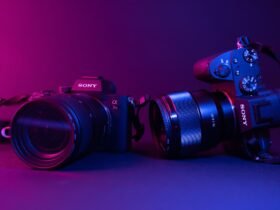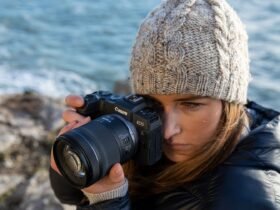The advent of cheap, high-quality digital cameras has led to a huge increase in the number of amateur filmmakers. In particular, many young people are trying their hand at cinematography as a way to express themselves. This has led to increased opportunities for young filmmakers who are seeking to break into the industry.
This post is an attempt to provide advice for those who want to become better cinematographers and make sure they don’t make some of the most common mistakes that amateurs often make.
It’s not easy being a cinematographer/DP! Everyone wants great results, but don’t assume that your camera will itself produce flawless results all the time. Learn from these DP mistakes and save yourself a lot of time in post production. Not only will you save a lot of time in post production but ofcourse you will improve the production quality and develop healthier relationships with the director.
1. Amateur DP does not follow the 180-degree rule

We start with the most common and particularly most made mistake made by amateur DPs. The 180-degree rule is a film industry regulation that describes how shutter speed and frame rate are related while filming motion in video.
The 180-degree rule indicates that your shutter speed should be double your frame rate to simulate motion the way the human eye sees it in real life. Most DSLRs can shoot at 1/50th of a second but not 1/48th, thus if shooting 24 frames per second, adjust shutter speed to 1/50th. Though the 180° rule can be ignored to imitate a specific film era, or used to produce intentionally choppy footage. Beginners aren’t well aware of this fact and are often seen making this mistake.
2. Not Using a ND filter

This tends to be a follow up point from the one you just read. Overexposure is a common issue when photographing with a shutter speed that is two twice the frame rate.But don’t worry; there are easy ways to fix exposure without abandoning the 180-degree shutter rule.ND filters are used to assist you follow the 180-degree rule standard while preserving proper exposure by lowering your shutter speed.
On a sunny day, shooting at 1/48 with an open aperture would be nearly impossible, which is where the ND filters come in.If you don’t follow the 180-degree rule, your footage may appear jittery, edgy, and unnatural. ND filters are available in a variety of strengths and work to lower the amount of light that reaches the camera’s sensor.
The film maker can obtain adequate exposure while using slower shutter speeds, extended exposures while utilizing a wider aperture, and regulate depth of focus by using these relatively inexpensive accessories.
3. Amateur DP does not white balance before shooting.

White balancing is the process of adjusting the temperature and tint to make the footage look natural. White balancing allows DPs to shoot footage that is not influenced by artificial lighting. It is often neglected by amateur cinematographers.
A good white balance can lead you a long way. It will not only keep your creative intent intact but also make the colorists job way more easier. With a good white balance you and the colorist can focus more on the look development. You can design the look you desire at the color grading step, whether you want to express happiness and sentimentality with warm colors or a moodier aesthetic with cooler, bluer tones.
Color checkers are frequently used by professionals to determine the white balance for their shots. A color checker will ensure that the tone and anti-reflective finish are as accurate as possible.This card acts as a reference point for your camera, making it easy to check for proper white balance in circumstances where the color temperature is uncertain or if there is mixed lightning.
Keep in mind, when shooting in raw format such as RED RAW. You have the flexibility to change the ISO and the white balance in the post stage. But it’s best to properly balance before the shoot to get the most out of it. But don’t confuse it with creative intent. If you are shooting a house that is on fire the scene obviously has to be lit that way.
4. Using Same Camera Angles That Other Films Have Used Before You

A film is a work of art that tells a story visually. A film can only be successful when it does everything right, such as the collaboration between cinematography and the actors, but it is also important for a film to have a distinct point of view.
The camera angles in films are what makes the scenes feel unique when they might not be that different from other scenes. It can make or break an entire scene in terms of how memorable and impacting it is to the viewer.
It’s okay to use similar angles if you do something with them that no other film has done before. If you want your scenes to feel like they belong in your own special world, then you need to do something with them that is new and fresh and distinctive. You don’t have to limit your creative instinct.
5. Bad Lighting when shooting a film

Bad lighting can ruin the mood of a film. It doesn’t only affect the mood of the film but it also affects how it looks on screen. Bad lighting often comes from bad planning. Make sure that you have researched the lighting conditions you will be working under.
As well, don’t be afraid to make your own lighting rigs to help ease the load of a video project. If you make a mistake, you can always undo it and start over. Good lighting can make a film look like it was made with a high budget.
Amateur cinematographers don’t shape there light and often don’t make use of Backlighting. The backlight is the last light added to the scene in most cinematography lighting procedures. It serves in the creation of depth and isolation between the subject and the background, as well as being a powerful creative tool for generating a variety of moods. A backlight, particularly when utilized as a hair light or rim light, can help set the mood.
- Also Read- 6 Tips to make a cinematic film with your smartphone
- Also Read- Assistant Colorist: Job Description, Responsibilities, Skills Needed, & Top Companies Hiring
- Also Read- 3 Epic Ways To Get More Color Grading Projects
6. Cinematographers don’t watch films

Cinematographers are motivated by the stories they want to tell. They have their own creative visions. But watching films is mandatory for any filmmaker. Watching films not only inspires or motivates you to make films but also helps trigger your imagination.
You must immerse yourself in the work that is available in order to achieve anything in any art form or entertainment medium.Make it your duty to watch one film a day, from as many various genres, ethnicities, and eras as you can. Watch Soviet silent films, Iranian movies, indies, Japanese films, Italian movies, Oscar winners, and more.
Watch movies from all decades and genres.Look for concepts, angles, and tones that you may employ. Examine how different directors use the camera, scene, and cut, as well as how different visual approaches affect your experience. Look for continuities and connections, as well as methods and patterns, that span decades and cultures. Discover film history from the inside out.
7. Shooting with the wrong lens

Visuals of a movie reflect or impact what you are feeling when you are immersed in it. The cinematographer’s hidden weapon is his lens selection. When you’re preparing a shoot, there’s a lot that goes into it. Cinematography must be visually appealing, tell a story, yet not be overwhelming.
It’s not just about the camera you use, but also about the language of the lens. When shooting a film, choosing a lens is a crucial decision. The overall tone of a film can be altered by changing the focal length. We should learn about the psychological impact lenses can have on how an audience interprets a narrative. So choose your lenses wisely.
8. Amateur DP do not frame the subject right.

Framing the subject is an important aspect of cinematography. The frame is what creates the landscape in which the subject lives and moves. It can also can create a sense of claustrophobia or isolation, which can be used to manipulate the audience. So it’s important for cinematographers to do their job right in order to get the desired effect on moviegoers.
The camera has an incredible power over how it displays things on screen, with its framing, angles and visual language. Cinematographers use this power in order to tell a story through their shots with emotion and meaning behind them.
Such as using close-ups to evoke empathy from viewers, or using wide angle shots for more epic visuals that capture entire landscapes instead of just one person in an enclosed space like a room.
But sometimes amateur DPs overuse the negative space or completely disregard the horizon line. By simply ensuring the tripods level and taking out time for framing you can easily dodge these mistakes.
9. Not knowing there camera and equipment

Often times cinematographers are not well versed or are hesitant with the rental camera equipment. Try to get ample time with the camera before the shoot so that it can help you tackle the nervousness. It is crucial knowing your equipment in and out so that you can focus on the other things such as, the creative intent of the framing or the lens choices you are gonna make. To be called a cinematographer you need to master your skills and abilities, be it the technical side or aesthetics.
10. Underestimating the power of a colorist

Amateur DP usually underestimate the power and the flexibility of a digitally acquired image in the color grading process. Collaborating with the colorist and discussing the color management and the workflow can be a huge benefit. Colorists are very well versed with what color spaces to be used for the maximum output. They also make sure the creative intent stays together till the finishing of the film.
Tips to Become a Masterful Cinematographer
- Find your passion for filmmaking.
- Learn the basics of cinematography like angles, framing, lighting, etc.
- Invest in great gear and save up for your dream camera.
- Confirm what style you want to shoot in (i.e., documentary, narrative, experimental).
- Build up your reel with footage from various projects and often share it with professionals for constructive criticism.
- Expand your network through social media platforms and local film communities.
- Hone your skills by shooting for anyone who will hire you or let you shoot their projects for free or at a discounted rate while maintaining the quality of work that is expected of you. The more clients you work with, the more connections you’ll build and the better your portfolio will become.
There are a number of common mistakes that many amateur DP make which can be avoided by learning from them and making sure to always pay attention. To master any art form be it cinematography or painting, it takes a lot of time and experience. But just don’t forget it’s not just about technicalities but also about feelings and how creatively you can express them through the language of the camera. Also it’s better to know the rules before you break them.











Got a Question?
Find us on Socials or Contact us and we’ll get back to you as soon as possible.